 1999 Peugeot 406 Break (Phase II, 1999) Dimensions, Size & Specs
1999 Peugeot 406 Break (Phase II, 1999) Dimensions, Size & SpecsMeasurements of the 1999 Peugeot 406 Break, engineered for optimal performance and comfort
| Dimensions | |
|---|---|
| Length: | 4736 mm186.5 in15.5 ft |
| Width: | 1765 mm69.5 in5.8 ft |
| Height: | 1455-1502 mm57.3-59.1 in4.8-4.9 ft |
| Trunk Capacity: | 525-1440 liter18.5-50.9 cu ft |
| Trunk Capacity (Max): | 1740-1741 liter61.4-61.5 cu ft |
| Weight Specifications | |
| Curb Weight: | 1365-1514 kg3009-3338 lbs |
| Maximal permitted Weight: | 2015-2155 kg4442-4751 lbs |
| Tire Specifications | |
| Rims Size: |
|
| Tire Sizes: |
|
The Peugeot 406 Break Phase II, produced between 1999 and 2004, is a versatile station wagon that combines elegant design with practical functionality. This generation refined the Peugeot 406 Break with subtle updates while maintaining its characteristic spaciousness and comfort. Measuring approximately 4735 to 4736 mm (186.4 to 186.5 inches) in length, the 406 Break Phase II offers a balanced footprint ideal for families and daily commuting. Its width ranges from 1760 to 1765 mm (69.3 to 69.5 inches), providing ample interior space without compromising maneuverability in city driving. Standing between 1455 and 1502 mm tall (57.3 to 59.1 inches), this model delivers a low and aerodynamic silhouette typical of station wagons built for both style and efficiency.
In terms of weight, the curb weight falls between 1365 and 1514 kg (3,011 to 3,337 lbs), while the maximum authorized weight is between 2015 and 2155 kg (4,443 to 4,750 lbs), allowing for substantial passenger and cargo loads. The Peugeot 406 Break Phase II shines when it comes to luggage capacity: it offers 525 to 1440 liters (18.5 to 50.8 cubic feet) of cargo space with the rear seats up, which expands impressively to between 1740 and 1741 liters (61.4 cubic feet) when the rear seats are folded down. This makes it an excellent choice for those needing adaptable cargo room for activities like family trips or transporting large items.
The vehicle rides on 15-inch rims paired with tire sizes 195/65 R15 or 205/60 R15, ensuring stability and comfortable handling across different road conditions. With its blend of size, storage flexibility, and moderate dimensions, the Peugeot 406 Break Phase II remains a practical and stylish station wagon option from its production era.
Discover the standout features that make the 1999 Peugeot 406 Break a leader in its class
Have a question? Please check our knowledgebase first.
The Peugeot 406 Break (Phase II, 1999) features a length ranging from 4735 mm to 4736 mm (186.4 - 186.5 inches), a width between 1760 mm and 1765 mm (69.3 - 69.5 inches), and a height varying from 1455 mm to 1502 mm (57.3 - 59.1 inches). These dimensions give the station wagon a balanced and practical size, optimizing interior space without making it overly large for urban or suburban driving.
The curb weight of the Peugeot 406 Break (Phase II, 1999) ranges from 1365 kg to 1514 kg (approximately 3009 - 3337 lbs), depending on the trim and configuration. Its maximum allowed weight, also known as gross vehicle weight rating (GVWR), varies between 2015 kg and 2155 kg (4442 - 4751 lbs). This weight allowance ensures the vehicle can safely carry passengers and cargo without compromising performance or safety.
The Peugeot 406 Break offers a versatile luggage capacity. With the rear seats in their upright position, it provides between 525 liters and 1440 liters (approximately 18.5 - 50.8 cubic feet) of cargo space, depending on the specific model configuration. When the rear seats are folded down, the cargo volume increases significantly to a range of 1740 to 1741 liters (about 61.4 to 61.5 cubic feet), making it ideal for carrying larger items or more luggage.
The Peugeot 406 Break (Phase II, 1999) is equipped with 15-inch rims as standard. Tire sizes typically fitted to this generation include 195/65 R15 and 205/60 R15. These tire options balance ride comfort, handling, and road grip, ensuring stable driving characteristics for a family-oriented station wagon.
Yes, the Peugeot 406 Break (Phase II, 1999) can generally fit into a standard residential garage. With a width of around 1760 - 1765 mm (69.3 - 69.5 inches) and height up to approximately 1502 mm (59.1 inches), it fits within typical garage width and height clearances. The length, just under 4.74 meters (around 186.5 inches), means owners should confirm their garage depth is adequate, but most standard garages offer sufficient length for this station wagon.
The Phase II Peugeot 406 Break introduced in 1999 maintained a very similar footprint to its predecessor, with minimal changes in exterior dimensions such as length and width. However, slight refinements in height and interior space were made to enhance practicality and cargo capacity. The 1999 update also included styling and equipment upgrades, making it more modern and comfortable compared to the original 406 Break model. Overall, the size remained consistent, ensuring familiar handling but with improved usability.
Dimensionally, the Peugeot 406 Break (Phase II, 1999) is competitive within the midsize station wagon segment. Its length of roughly 4735 mm (186.4 inches) places it among similarly sized rivals like the Ford Mondeo Estate or Volkswagen Passat Variant of that era. The width around 1760 mm (69.3 inches) offers reasonable interior space while allowing for easy maneuvering. Its generous luggage capacity, especially with folded seats, is often larger than some competitors, making it an attractive choice for buyers needing practical cargo space without stepping up to a larger SUV.
Being a station wagon, the Peugeot 406 Break (Phase II, 1999) provides significantly more flexible cargo capacity compared to sedan versions of the Peugeot 406. This model's large rear cargo area, bolstered by fold-down rear seats, allows for transportation of bulky items unsuitable for traditional sedans. Additionally, the wagon’s higher roofline, with height around 1455 - 1502 mm (57.3 - 59.1 inches), improves headroom for rear passengers and enhances overall cabin spaciousness. This makes it a practical choice for families or those requiring versatile interior layouts.
The 1999 Phase II revision of the Peugeot 406 Break brought several updates focusing on style, comfort, and functionality. Exterior changes included refreshed front and rear styling for a more contemporary look. Interior improvements enhanced user comfort with updated materials and ergonomics. Mechanically, the range saw refinements in engine options and suspension tuning, leading to better handling and ride quality. The vehicle also benefited from upgrades in safety features and equipment levels, reflecting evolving market demands and regulations.
The curb weight of the Peugeot 406 Break (Phase II, 1999) ranges from about 1365 kg to 1514 kg (3009 - 3337 lbs). Variations in weight usually depend on the trim level, equipment, and engine choice. Heavier versions tend to offer more comfort features or stronger engines, which can slightly affect acceleration and fuel consumption but improve ride stability. Lighter versions provide potentially more agile handling and better fuel economy. Overall, the weight remains moderate for a midsize station wagon, contributing to balanced driving dynamics suitable for family and daily driving use.
Discover similar sized cars.
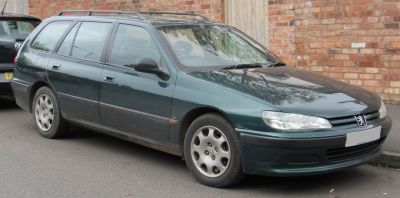
| Production: | 1996-1999 |
|---|---|
| Model Year: | 1996 |
| Length: | 4725-4740 mm186.0-186.6 in |
| Width: | 1765 mm69.5 in |
| Height: | 1505 mm59.3 in |
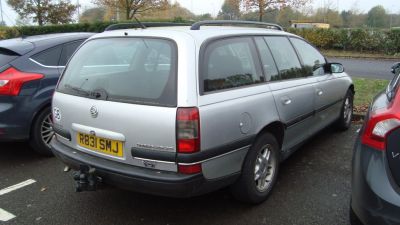
| Production: | 1994-2001 |
|---|---|
| Model Year: | 1994 |
| Length: | 4819 mm189.7 in |
| Width: | 1960 mm77.2 in |
| Height: | 1545 mm60.8 in |

| Production: | 1988-1994 |
|---|---|
| Model Year: | 1989 |
| Length: | 4744 mm186.8 in |
| Width: | 1760 mm69.3 in |
| Height: | 1490 mm58.7 in |
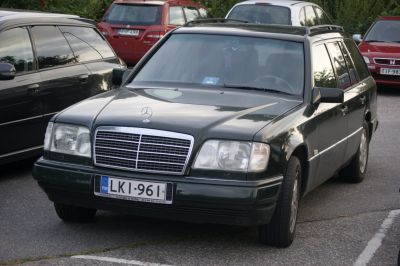
| Production: | 1992-1996 |
|---|---|
| Model Year: | 1993 |
| Length: | 4765 mm187.6 in |
| Width: | 1740 mm68.5 in |
| Height: | 1468-1498 mm57.8-59.0 in |
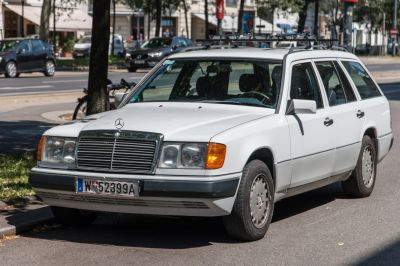
| Production: | 1989-1993 |
|---|---|
| Model Year: | 1989 |
| Length: | 4765 mm187.6 in |
| Width: | 1740 mm68.5 in |
| Height: | 1489-1497 mm58.6-58.9 in |
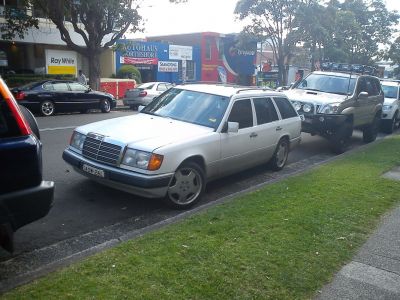
| Production: | 1985-1989 |
|---|---|
| Model Year: | 1985 |
| Length: | 4765 mm187.6 in |
| Width: | 1740 mm68.5 in |
| Height: | 1490-1498 mm58.7-59.0 in |
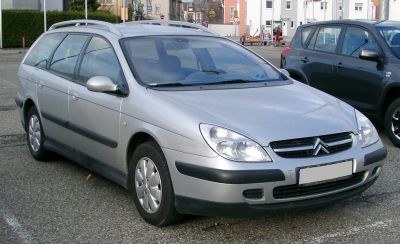
| Production: | 2001-2008 |
|---|---|
| Model Year: | 2001 |
| Length: | 4760 mm187.4 in |
| Width: | 2100 mm82.7 in |
| Height: | 1520 mm59.8 in |

| Production: | 2012-2014 |
|---|---|
| Model Year: | 2012 |
| Length: | 4790 mm188.6 in |
| Width: | 1780 mm70.1 in |
| Height: | 1535 mm60.4 in |
